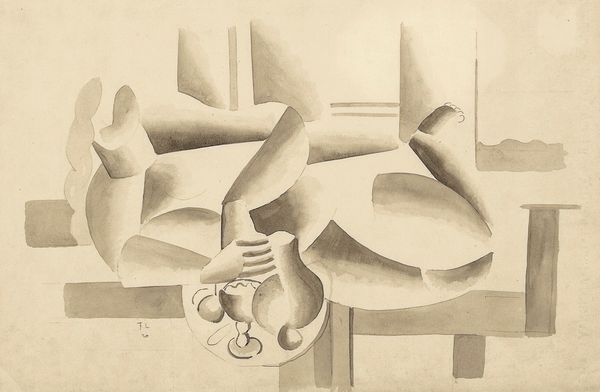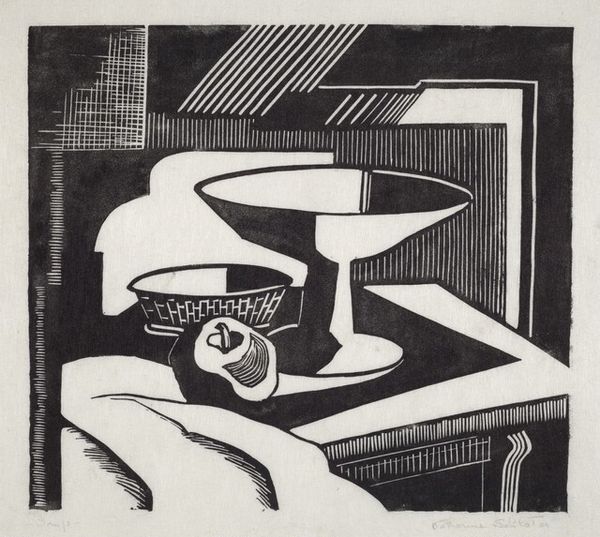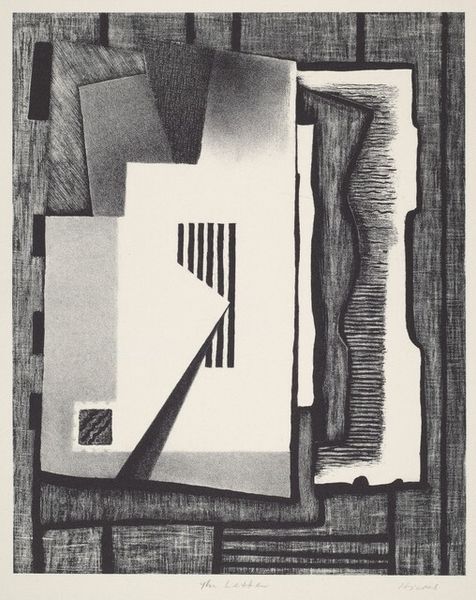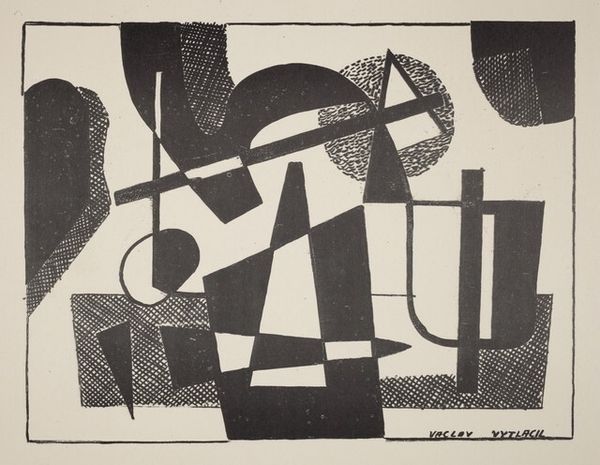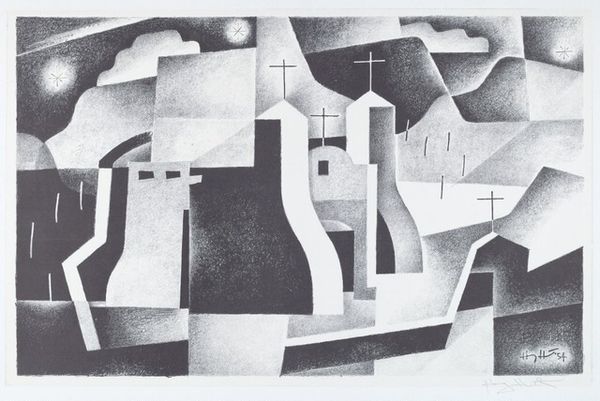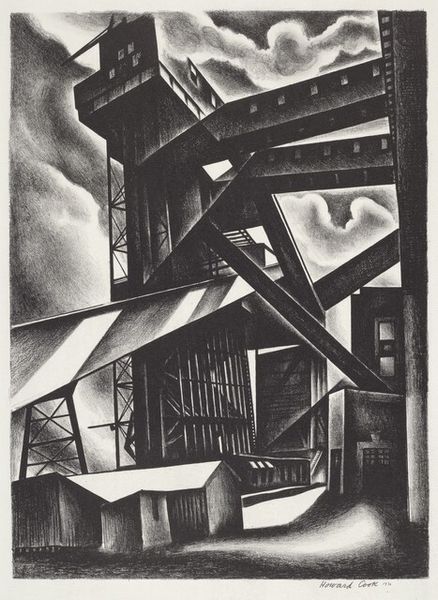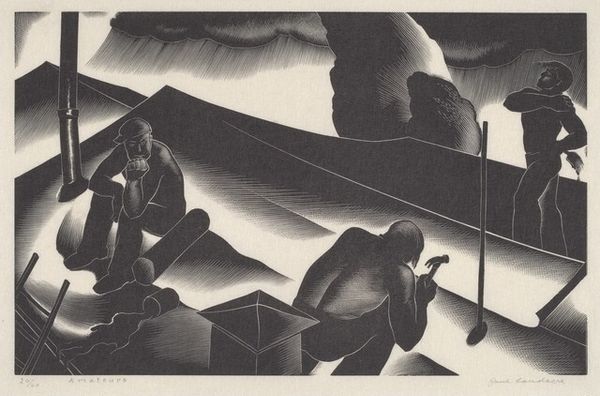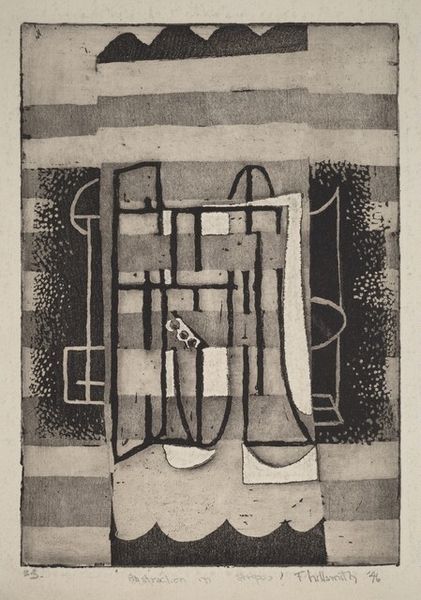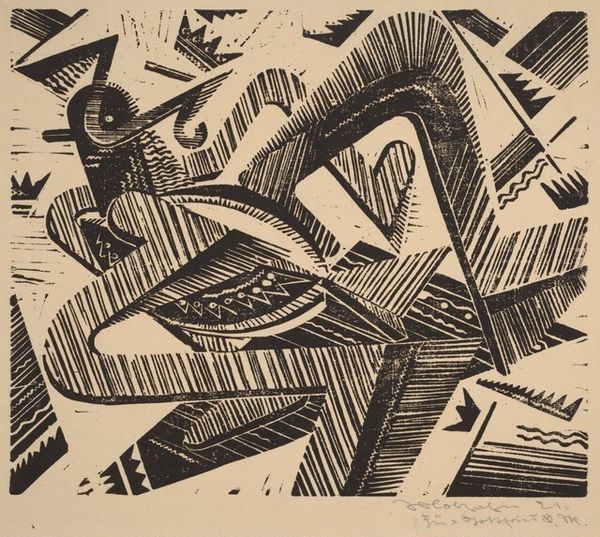
# print
#
geometric
#
line
Dimensions: image: 21.1 × 21.1 cm (8 5/16 × 8 5/16 in.) sheet: 36.2 × 26.8 cm (14 1/4 × 10 9/16 in.)
Copyright: National Gallery of Art: CC0 1.0
Editor: Here we have Paul Landacre’s 1934 wood engraving, "The Press." The stark black and white contrast, coupled with the almost mechanical subject matter, creates a rather imposing atmosphere. What can you tell me about its historical context and possible meanings? Curator: The image really does portray the overwhelming presence of industrial machinery. Produced during the Great Depression, this piece reflects a period when the means of production were both a source of hope and anxiety. Think about the public's perception of factories then – did they signify progress, or exploitation? How does Landacre visually represent that tension here, using a traditionally handcrafted technique like wood engraving to depict a modern printing press? Editor: I see that point. Using such a meticulous, old-fashioned technique to depict something so modern definitely adds another layer to its meaning. Perhaps he's suggesting that even in the age of the machine, the hand still has a vital role. Curator: Precisely. And what about the composition itself? The close-up perspective, the emphasis on the geometric shapes, and the dramatic use of light and shadow--what do these stylistic choices contribute to the overall message of "The Press" in relation to its audience and time period? Editor: That high contrast lighting definitely amps up the drama. I hadn’t considered how its style connects to larger conversations happening around the role of industrialization at the time. I’ll definitely be thinking about this one more. Curator: Absolutely! And it prompts consideration of how art serves as both a reflection of, and a commentary on, broader socio-political narratives.
Comments
No comments
Be the first to comment and join the conversation on the ultimate creative platform.
